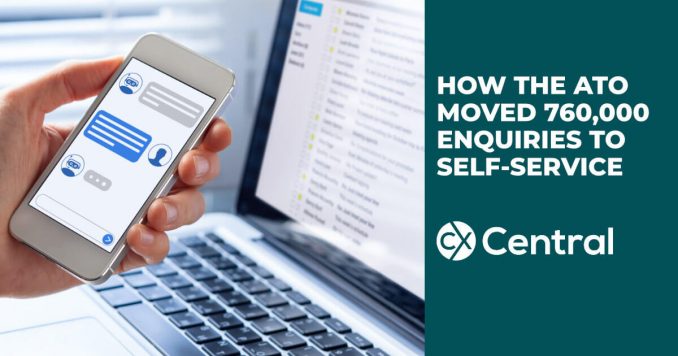
Using a virtual assistant to improve self-service
It seems like every second day we hear about the increasing prevalence of Virtual Agents, Virtual Assistants, Chatbots and self-service technology and how it’s changing the CX landscape.
What seems to be invariably lacking though is some actual data to support it.
In a recent Press Release by Nuance Communications, however, we got some insight into how the Australian Tax Office’s new Virtual Assistant, Alex, is making an impact.
Alex provides tailored responses to customer queries using natural language understanding, conversational dialogue and advanced resolution techniques, to answer hundreds of commonly asked questions across a range of categories.
This allows contact centre agents to spend more time managing complex requests.
Since March 2016, more than 950,000 conversations have taken place with Alex, with steady monthly increases occurring from July through to October as many Australian’s focussed on submitting their tax returns.
The virtual assistant will continue to evolve in its contextual conversations with customers as more people interact with it on a daily basis.

Initial results show first contact resolution rates of 80 per cent, exceeding the industry benchmark of 60-65 per cent.
These strong initial results demonstrate an efficient and effective customer experience, indicating that the majority of customer queries are being answered by the virtual assistant.
For clarity, when Alex is unable to complete a response the conversation is seamlessly passed to a live agent with no knowledge to the customer.
The ATO continues to pioneer the use of new technology to enhance the customer experience.
A couple of years ago the ATO introduced Nuance voice biometrics across its call centre and mobile applications and to date, over 2.4 million customers have enrolled.
By using Voice Biometrics to identify a customer the ATO has saved approximately 40 seconds off every call providing considering savings to the ATO, and a better experience for the customer.
With the ATO leading the charge and the technology becoming more widely accepted (and affordable!), there is no doubt that we will start to see more an more contact centres seek to reap the benefits of both Virtual Assistants and Voice Biometrics in the immediate future.
If you’d like to explore moving some enquiries to self-service in your centre you’ll find a list of chatbot, Virtual Assistant and other automation technology suppliers in our CX Directory




1 Trackback / Pingback